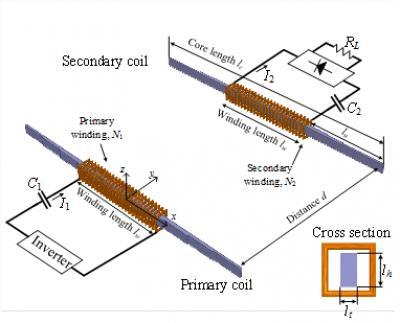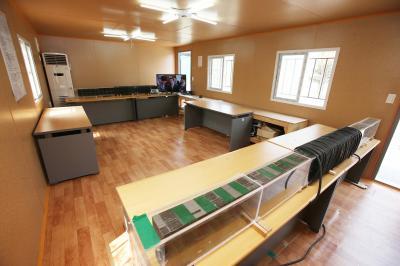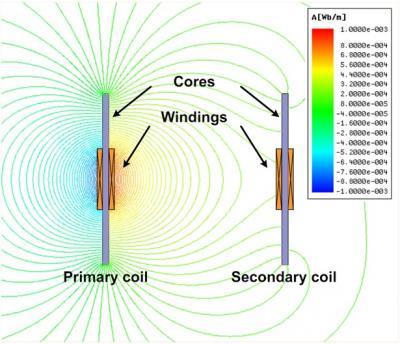Researchers have reported a big improvement in the distance of wireless power. Their "Dipole Coil Resonant System (DCRS) boosts the extended range of inductive power transfer up to 5 meters between transmitter and receiver coils.
It's not quite the rumors about Nikola Tesla but if you think that's not a lot, ponder that Bluetooth is only slightly greater after 15 years in progress.
And people want wireless power a lot more than they ever wanted Bluetooth. Since MIT's introduction of the Coupled Magnetic Resonance System (CMRS) in 2007, which used a magnetic field to transfer energy for a distance of 2.1 meters, the development of long-distance wireless power transfer has attracted a great deal of attention. MIT knew that its initial CMRS had commercialization limits: a rather complicated coil structure (composed of four coils for input, transmission, reception, and load); bulky-size resonant coils; high frequency (in a range of 10 MHz) required to resonate the transmitter and receiver coils, which results in low transfer efficiency; and a high Q factor of 2,000 that makes the resonant coils very sensitive to surroundings such as temperature, humidity, and human proximity.
So the race has been on to make something for practical use. Chun T. Rim, a professor of Nuclear&Quantum Engineering at KAIST, and his team showcased their work yesterday at the KAIST campus in Daejeon, Korea.

The overall configuration of DCRS, showing primary and secondary coils. Credit: KAIST
Professor Rim proposed a meaningful solution to these problems through DCRS, an optimally designed coil structure that has two magnetic dipole coils, a primary one to induce a magnetic field and a secondary to receive electric power.
Unlike the large and thick loop-shaped air coils built in CMRS, the KAIST research team used compact ferrite core rods with windings at their centers. The high frequency AC current of the primary winding generates a magnetic field, and then the linkage magnetic flux induces the voltage at the secondary winding.
Scalable and slim with a size of 3 m in length, 10 cm in width, and 20 cm in height, DCRS is significantly smaller than CMRS. The system has a low Q factor of 100, showing 20 times stronger against the environment changes, and works well at a low frequency of 100 kHz.
The team conducted several experiments and achieved promising results: for instance, under the operation of 20 kHz, the maximum output power was 1,403 W at a 3-meter distance, 471 W at 4-meter, and 209 W at 5-meter. For 100 W of electric power transfer, the overall system power efficiency was 36.9% at 3 meters, 18.7% at 4 meters, and 9.2% at 5 meters.

A prototype of the Dipole Coil Resonant System, developed by a KAIST research team, turns a LED television on at a 5-meter distance. Credit: KAIST
"With DCRS," Professor Rim said, "a large LED TV as well as three 40 W-fans can be powered from a 5-meter distance."
"Our technology proved the possibility of a new remote power delivery mechanism that has never been tried at such a long distance. Although the long-range wireless power transfer is still in an early stage of commercialization and quite costly to implement, we believe that this is the right direction for electric power to be supplied in the future. Just like we see Wi-Fi zones everywhere today, we will eventually have many Wi-Power zones at such places as restaurants and streets that provide electric power wirelessly to electronic devices. We will use all the devices anywhere without tangled wires attached and anytime without worrying about charging their batteries."

A simulation result of magnetic flux lines of DCRS coil configuration. Credit: KAIST
Professor Rim's team completed a research project with the Korea Hydro & Nuclear Power Co., Ltd in March this year to remotely supply electric power to essential instrumentation and control equipment at a nuclear power plant in order to properly respond to an emergency like the one happened at the Fukushima Daiichi nuclear plant.
They succeeded to transfer 10 W of electricity to the plant that was located 7 meters away from the power base.





Comments